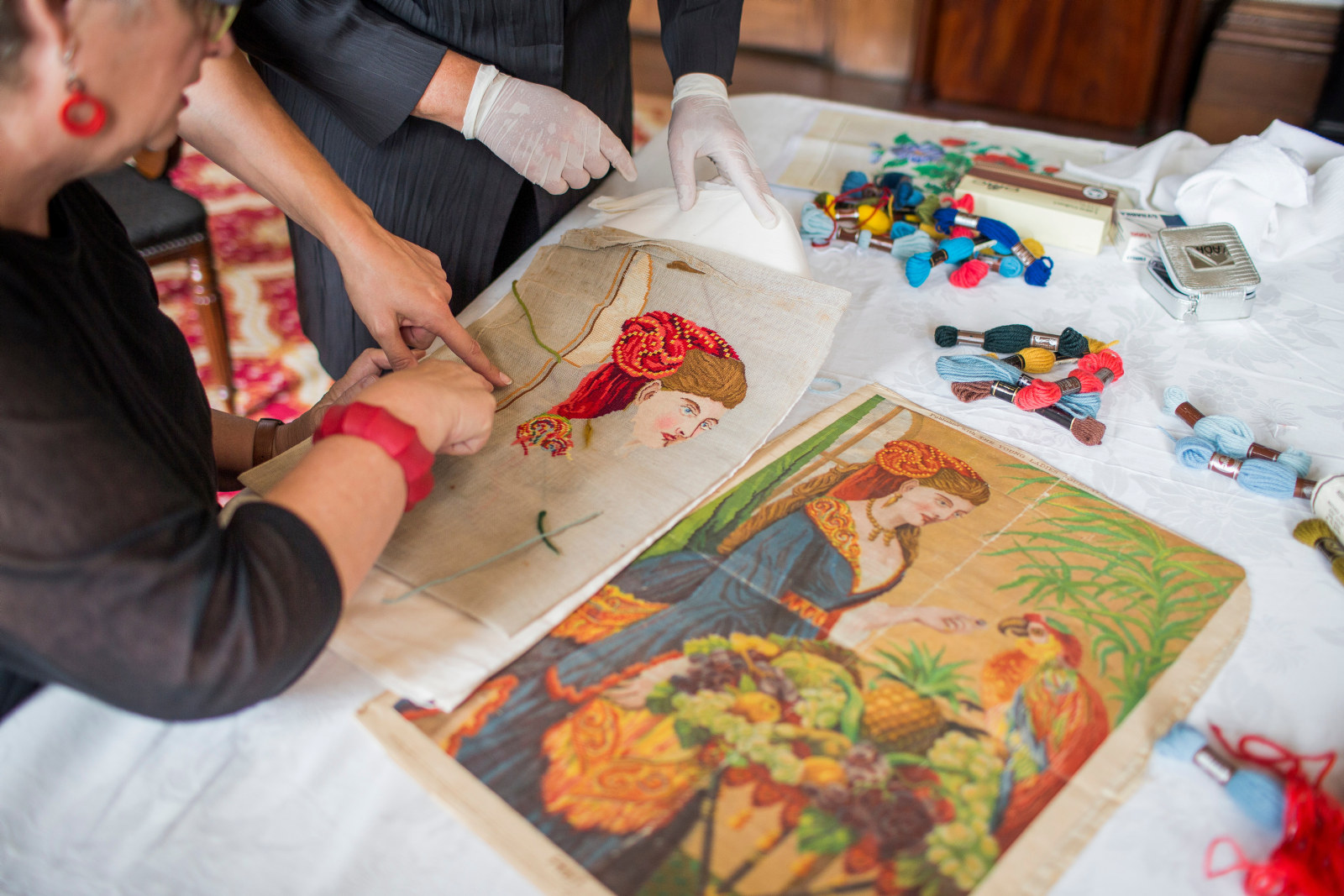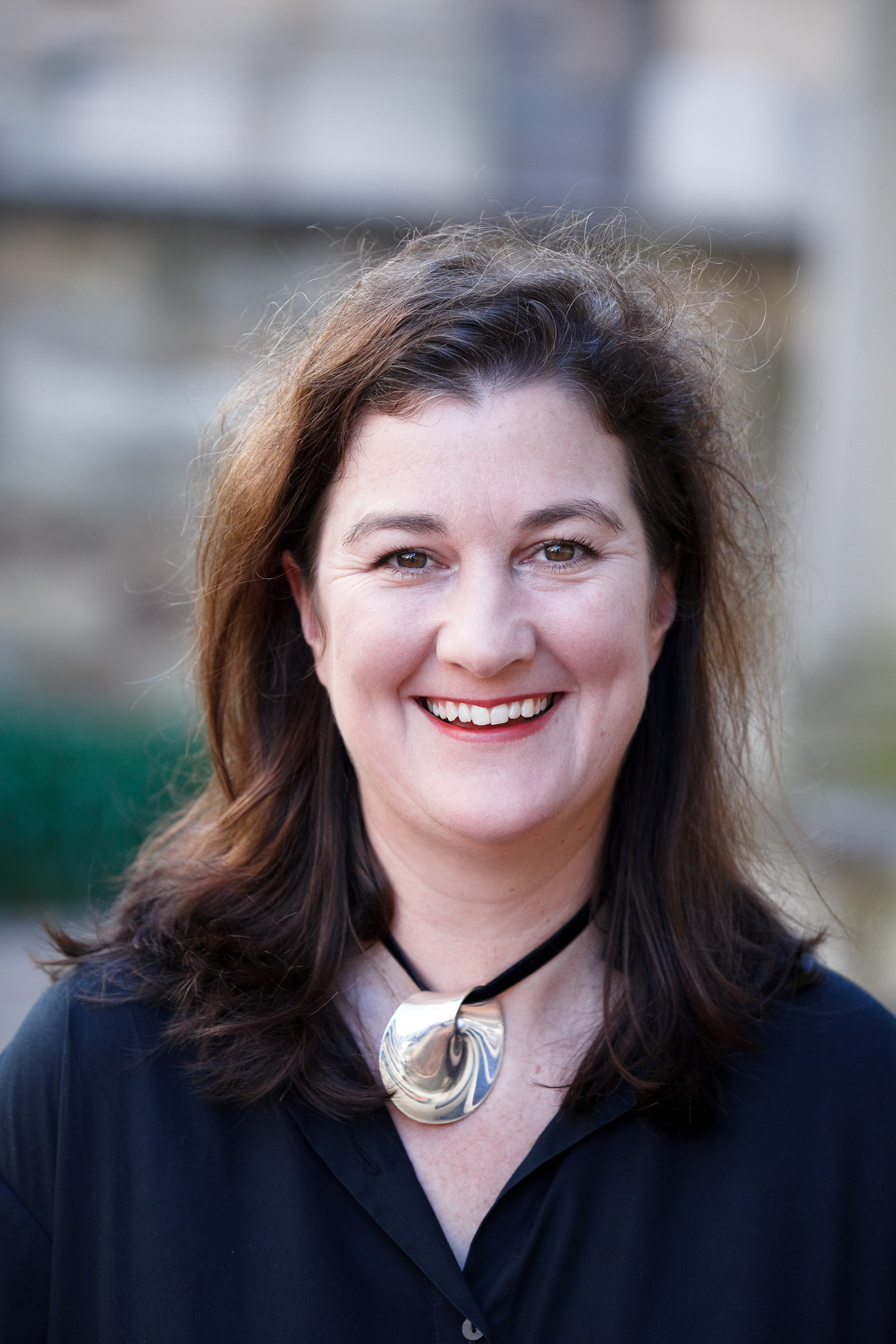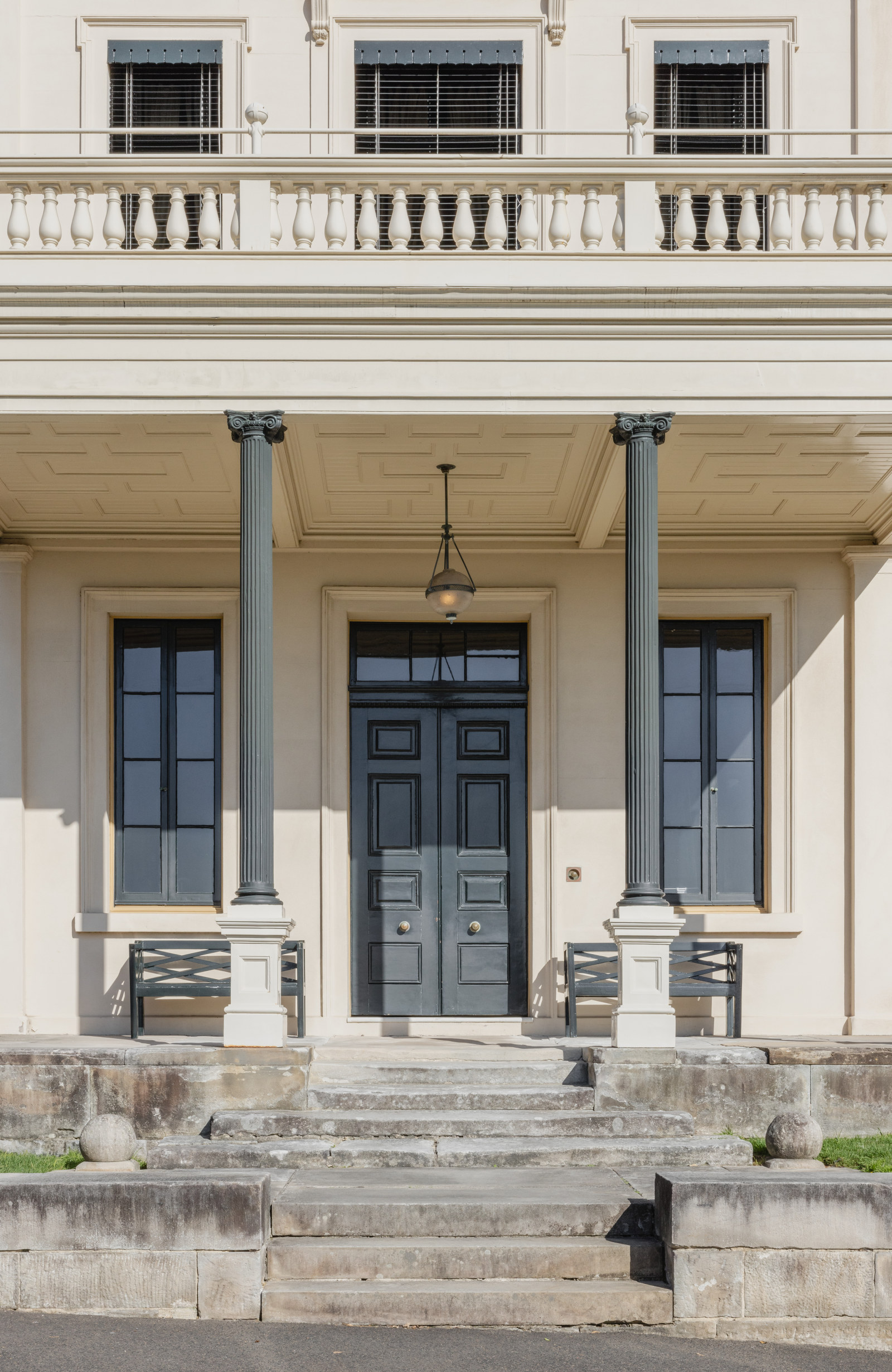Stitching for our house museums
For almost 15 years, a dedicated group of volunteers has gathered to sew, crochet, knit, embroider and stuff historically authentic soft furnishings for our houses.
Soft furnishings – including curtains, bed hangings, doilies and antimacassars, bolsters, hassocks, table covers, watch pockets, trimmings, even padded bricks used as door stops – contribute so much to the appearance of an interior. They can also signal many things: seasonal changes, room function, and the taste, status and idiosyncrasies of the occupants. In the 19th century particularly, soft furnishings all had a key role to play. Today, Museums of History NSW (previously Sydney Living Museums) explores this meaning through the interpretation and furnishing of our places.
Formed in 2007, the Soft Furnishings volunteer group has mended, re-created and created soft furnishings for all of our house museums over the years. This remarkable group, led since 2018 by textile artist Henrietta Cheshire, meets fortnightly – albeit with the odd break due to the pandemic – at Elizabeth Bay House.
Authenticity first
To ensure that their work is as authentic as possible, it’s informed by original sources, including objects from the Caroline Simpson Library & Research Collection and surviving examples from intact collections such as that at Rouse Hill Estate. Vital technical and historical clues are provided by everything from the dark red binding on a case cover to a long-forgotten hemming technique or the way a padded brick has been covered.
The unique collection of pattern books, household guides, trade catalogues, domestic and upholsterers’ manuals and other rare books in the Caroline Simpson Collection – some with actual fabric samples inserted – provides a rich source of historically accurate references for both curators and the Soft Furnishings volunteers. In her seminal publication Soft furnishings 1830–1930, Elizabeth Wright suggests that ‘the museum curator … gauge the “pitch” of a particular interior’,1 and at the same time we need to consider the function and use of the room and the availability of authentic materials. It’s becoming increasingly challenging to find appropriate fabrics – such as plain and sprigged muslins, glazed chintz, holland (coarse linen), horsehair and animal fur – in the right designs, colours and weights.
MHNSW also provides the group with training in specific techniques such as Berlin wool work, trimmings, and most recently rag-rug making, facilitated by Alison Waterhouse, our invaluable Producer of Volunteer & Internship Programs.
Bed hangings
The group recently completed a new set of bed hangings (in the form of mosquito netting) for the four-post bedstead at 60 Gloucester Street, Susannah Place. The room is a re-creation of a bedroom of the Cunninghame family, the house’s first tenants in the 1840s. While no 19th-century mosquito nets are known to have survived in NSW, there are many contemporary references to them and their necessity, and newspapers of the day advertised green mosquito netting for sale. The rewarding process of re-creating the bed hangings included sourcing the netting and having it dyed to the right shade of green, in consultation with Curator Anna Cossu. I like to imagine the Cunninghames on a hot, still night in The Rocks, driving out the mosquitoes before retiring to their lightly hung four-post bedstead.
Just in time for last summer, the principal bed at Elizabeth Farm was hung with a wonderful new set of lightweight white cotton bed hangings. The volunteers painstakingly made an elaborate complement of hangings, known as ‘bed furniture’, which included knitting more than 14 metres of fringe from a traditional pattern, and then stitching it onto the cotton fabric.
Object-based learning
As well as soft furnishings for our house museums, the group creates props for use by our Learning Team in education programs. Allowing students to handle and examine these items helps them to gain a deeper understanding of our places and how people lived in the past.
In the mid-19th century, bedding was made up of multiple layers. The workwoman’s guide, a domestic manual written by an anonymous ‘Lady’ in 1838, states that a completely furnished bed comprises a straw palliasse, a wool or hair mattress, a feather bed, a bolster, two or three pillows, a quilt or counterpane, blankets, sheets and pillowcases. These layers are demonstrated on the four-post bedstead in the principal bedroom at Vaucluse House. The volunteers have made ‘sample pillows’ in three sections from mattress ticking and stuffed each section with the appropriate materials to replicate a palliasse (straw), a common mattress (horsehair) and a feather bed (feathers). The students can squish and squeeze each sample pillow to understand just how comfortable and hygienic (or not) these beds were.
To support the interpretation of the Vaucluse House drawing room, which has been refurbished with furniture mostly provenanced to the Wentworth family, the volunteers also made cushions covered in remnants of the same luscious crimson silk damask used to upholster the furniture and create the window furnishings, so that students can touch the lustrous fabric.
Whether sewing a patch in an invisible place or stitching an elaborate silk dropper into a window valance, the Soft Furnishings volunteers are quiet achievers, stitching, mending and creating for our places. We’re indebted to their sense of duty and passion for our house museums.
Footnote
- E Wright, Soft furnishings 1830–1930, Historic Houses Trust of NSW, Sydney, 1995, p1.
Published on
Related

A stitch in time
Tatting, knotting, knitting, pin-tucking, crocheting, pinking, stitching, stuffing, embroidering … needles fly at Elizabeth Bay House


